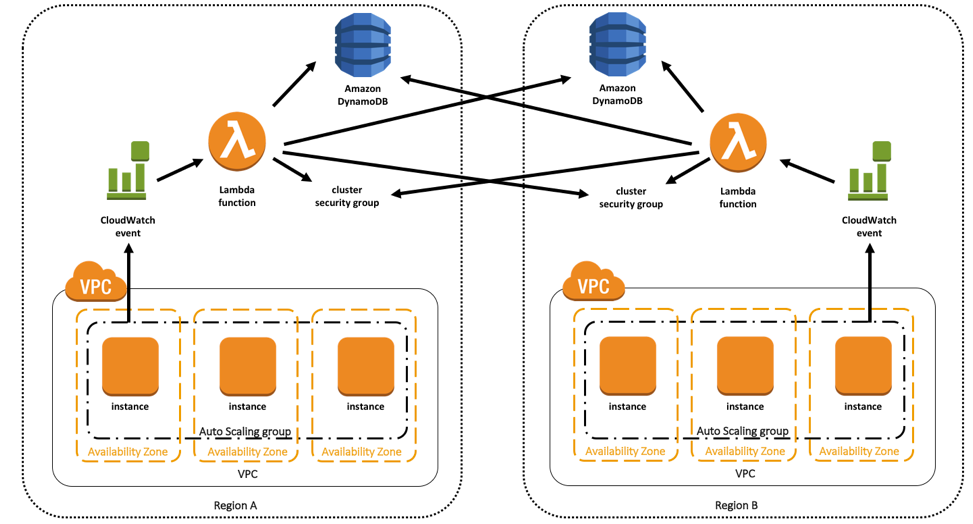AWS Compute Blog
Category: Management Tools
Query for the latest Amazon Linux AMI IDs using AWS Systems Manager Parameter Store
This post is courtesy of Arend Castelein, Software Development Engineer – AWS Want a simpler way to query for the latest Amazon Linux AMI? AWS Systems Manager Parameter Store already allows for querying the latest Windows AMI. Now, support has been expanded to include the latest Amazon Linux AMI. Each Amazon Linux AMI now has […]
Monitoring your Amazon SNS message filtering activity with Amazon CloudWatch
This post is courtesy of Otavio Ferreira, Manager, Amazon SNS, AWS Messaging. Amazon SNS message filtering provides a set of string and numeric matching operators that allow each subscription to receive only the messages of interest. Hence, SNS message filtering can simplify your pub/sub messaging architecture by offloading the message filtering logic from your subscriber systems, as well […]
Using AWS CloudFormation to Create and Manage AWS Batch Resources
This post courtesy of Arya Hezarkhani. AWS CloudFormation allows developers and systems administrators to easily create and manage a collection of related AWS resources (called a CloudFormation stack) by provisioning and updating them in an orderly and predictable way. CloudFormation users can now deploy and manage AWS Batch resources in exactly the same way that […]
Managing Cross-Account Serverless Microservices
This post courtesy of Michael Edge, Sr. Cloud Architect – AWS Professional Services Applications built using a microservices architecture typically result in a number of independent, loosely coupled microservices communicating with each other, synchronously via their APIs and asynchronously via events. These microservices are often owned by different product teams, and these teams may segregate their […]
Sharing Secrets with AWS Lambda Using AWS Systems Manager Parameter Store
This post courtesy of Roberto Iturralde, Sr. Application Developer- AWS Professional Services Application architects are faced with key decisions throughout the process of designing and implementing their systems. One decision common to nearly all solutions is how to manage the storage and access rights of application configuration. Shared configuration should be stored centrally and securely with […]
Implementing Dynamic ETL Pipelines Using AWS Step Functions
This post contributed by: Wangechi Dole, AWS Solutions Architect Milan Krasnansky, ING, Digital Solutions Developer, SGK Rian Mookencherry, Director – Product Innovation, SGK Data processing and transformation is a common use case you see in our customer case studies and success stories. Often, customers deal with complex data from a variety of sources that needs […]
Capturing Custom, High-Resolution Metrics from Containers Using AWS Step Functions and AWS Lambda
Contributed by Trevor Sullivan, AWS Solutions Architect When you deploy containers with Amazon ECS, are you gathering all of the key metrics so that you can correctly monitor the overall health of your ECS cluster? By default, ECS writes metrics to Amazon CloudWatch in 5-minute increments. For complex or large services, this may not be sufficient to make […]
Automating Security Group Updates with AWS Lambda
Customers often use public endpoints to perform cross-region replication or other application layer communication to remote regions. But a common problem is how do you protect these endpoints? It can be tempting to open up the security groups to the world due to the complexity of keeping security groups in sync across regions with a […]
Automating Amazon EBS Snapshot Management with AWS Step Functions and Amazon CloudWatch Events
Brittany Doncaster, Solutions Architect Business continuity is important for building mission-critical workloads on AWS. As an AWS customer, you might define recovery point objectives (RPO) and recovery time objectives (RTO) for different tier applications in your business. After the RPO and RTO requirements are defined, it is up to your architects to determine how to […]
Automate Your IT Operations Using AWS Step Functions and Amazon CloudWatch Events
Rob Percival, Associate Solutions Architect Are you interested in reducing the operational overhead of your AWS Cloud infrastructure? One way to achieve this is to automate the response to operational events for resources in your AWS account. Amazon CloudWatch Events provides a near real-time stream of system events that describe the changes and notifications for […]







